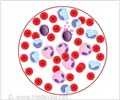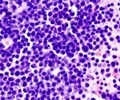
This discovery is promising for patients as it will aid in diagnosing these cancers, which are currently difficult for physicians to distinguish from other leukemias.
More importantly, the study results suggest that these patients could be helped by existing FDA-approved drugs designed to inhibit the chain reactions impacting JAK and SRC/TNK2, though clinical trials are needed.
"Our ability to rapidly pinpoint a new cancer-driving mutation demonstrates the power of integrating improved genome sequencing technology. It will accelerate our ability to tailor treatments to individuals and each research victory gives us more insight into the nature of this complex disease," said Jeffrey W. Tyner, Ph.D., an assistant professor with the OHSU Knight Cancer Institute and Cell and Developmental Biology Department, whose lab led the research.
"What distinguished this research was our method for matching voluminous amounts of gene sequencing data with drug sensitivity data to quickly deduce which mutations were relevant in causing disease. This allows us to make a difference for patients who don't currently have good therapeutic options," he added.
Tyner and the other researchers who conducted this study used a combination of tests not yet commonly deployed together for research on primary specimens collected from cancer patients. They performed gene sequencing on specimens from 27 patients, creating a profile of the possible genetic causes of these diseases.
Advertisement
The two-pronged study approach provided researchers with the ability to quickly home in on and verify a root cause of these rare forms of leukemia. Of the 27 patients in the study, 16, or about 59 percent, had the CSF3R mutation.
Advertisement
"Our findings are not only promising for the treatment of patients with CNL and aCML but also validate our approach to identify new drug targets in cancer," she added.
In fact, during the study period, a CNL patient was treated with the FDA-approved drug ruxolitinib, which inhibits the cancer cell growth initiated by the CSF3R mutation. This treatment resulted in a dramatic improvement in the patient's condition.
The study was published in the May 9 edition of the New England Journal of Medicine.
Source-ANI










